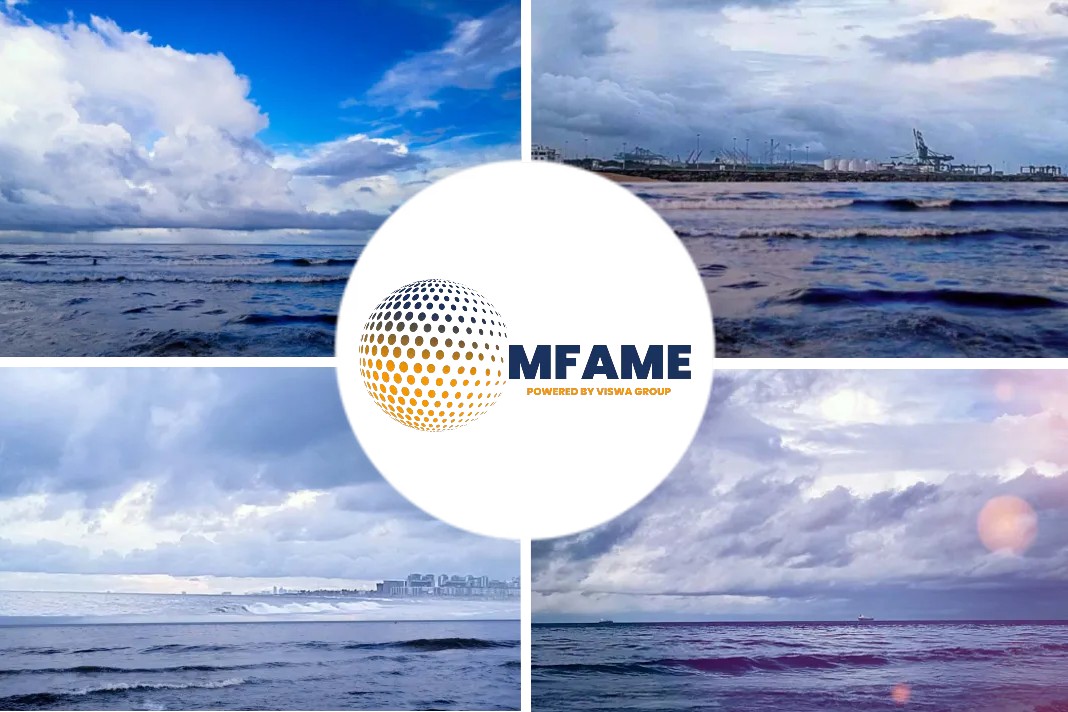
The National Transportation Safety Board (NTSB) has issued an investigation report regarding the cruise ship Radiance of the Seas struck and damaged a mooring dolphin, in Alaska.
The incident
On May 9, 2022, about 0727 local time, the cruise ship Radiance of the Seas was maneuvering in Sitka Sound toward the pier at the Sitka Sound Cruise Terminal near Sitka, Alaska, when the vessel struck and damaged a mooring dolphin. No pollution or injuries were reported. Damage to the pier was estimated at $2.1 million.
The Sitka Sound Cruise Terminal pier was extended northward by 395 feet with the addition of two dolphins and a connecting walkway in April 2021 (after the US Army Corps of Engineers approved the project in April 2020). However, according to NOAA, the facility did not communicate the change to the agency. As a result, the pier was not accurately depicted on any navigational charts. Therefore, during the casualty voyage, the Radiance of the Seas’s ECDIS showed the original, nonextended pier. Although regulation does not require reporting of pier modifications, communication of the pier’s extension to NOAA would have resulted in the ENC being updated, thus improving the vessel operator’s awareness of the pier’s extension.
The Radiance of the Seas had moored at the Sitka Sound Cruise Terminal the week before the casualty with the same master but on the west side of the pier, which did not require the vessel to rotate before docking. The facility had shared the updated mooring plan with the vessel’s company. However, none of the members of the bridge team had noted the new length of the pier during the visit, and after the casualty, the officers and master stated that they were unaware of the change.
As the Radiance of the Seas approached the port, the master planned to rotate the vessel about 180° before backing into the berth and mooring port side to the pier in the inboard (east side) berth, with the stern facing the terminal. The location where they chose to start the turn was based on the inaccurate ENC. The Alaska state-licensed pilot who was on the bridge at the time and was aware of the new expansion also did not inform the master or bridge team of the pier extension either before or during the maneuver. Had the bridge team identified the pier’s extension on the previous visit, they likely would have planned to rotate the vessel in a different location in the Sitka Sound with ample distance to turn before mooring.
Probable cause
The National Transportation Safety Board determines that the probable cause of the contact of the cruise ship Radiance of the Seas with the Sitka Sound Cruise Terminal pier was the master and bridge team’s overreliance on an electronic chart to identify the pier’s position relative to their planned rotation location, and the master’s misunderstanding of the clearance distances to the pier being called by the crewmember on the stern while the vessel was rotating. Contributing was the Sitka Sound Cruise Terminal not reporting the extension of the pier into the waterway to the appropriate hydrographic authority in order to update the relevant navigational chart.
Lessons learned
- Proper voyage planning includes developing a complete plan for every phase of the voyage—from the vessel’s starting port to its end port (berth to berth), including leaving the dock and mooring. Reference points for maneuvering should be identified, measured precisely, and reported clearly. Vessel bridge teams should also ensure that they have the most up-to-date data before getting underway and consult with the local pilot(s) on the accuracy of navigation charts to ensure depictions of ports and/or terminals are correct.
- Ports and terminals should immediately report significant modifications to port or terminal configurations to the appropriate hydrographic authority (for example, the National Oceanic and Atmospheric Administration) so that charts can be updated and the changes made readily available to vessel owners, operators, and crews/bridge teams.
Did you subscribe to our newsletter?
It’s free! Click here to subscribe!
Source: NTSB






















